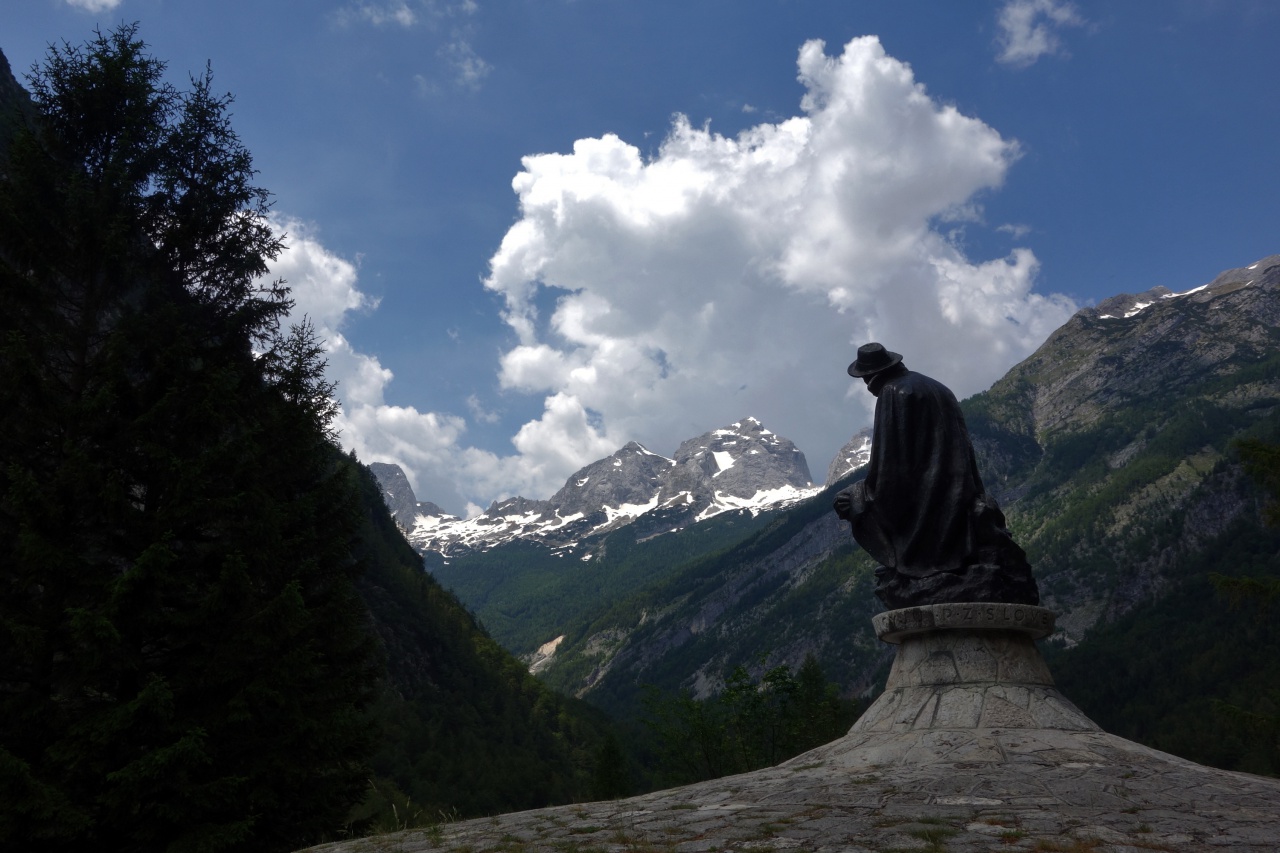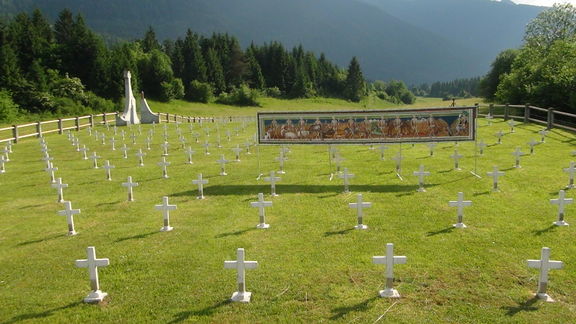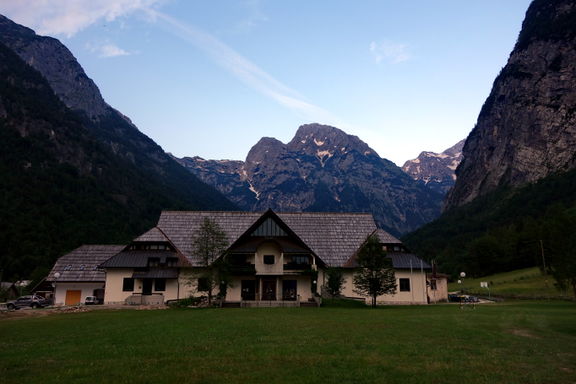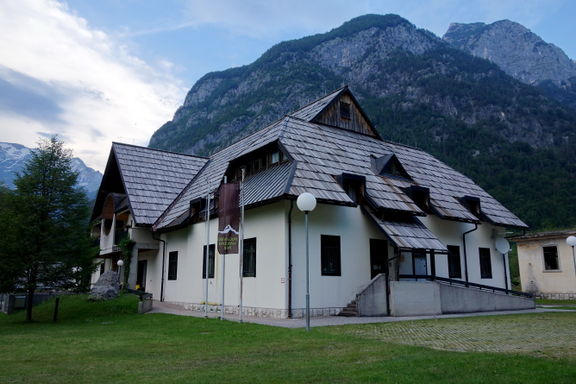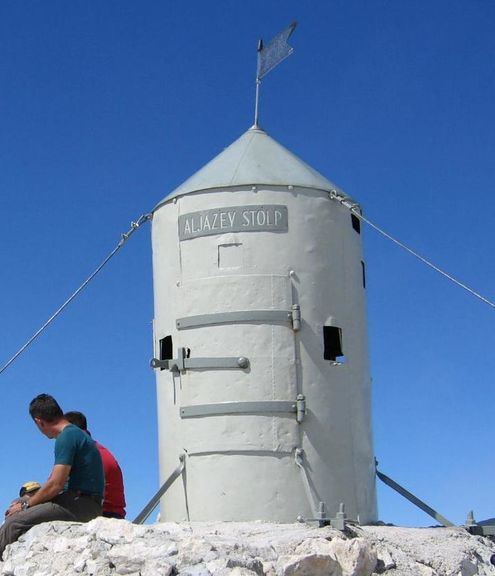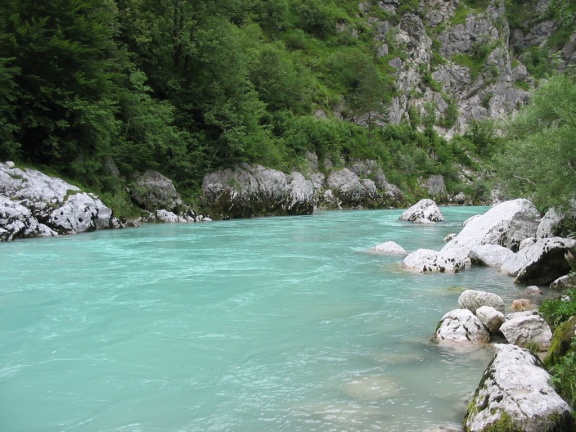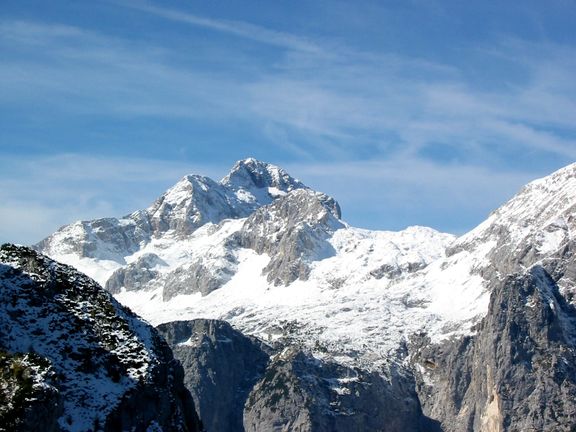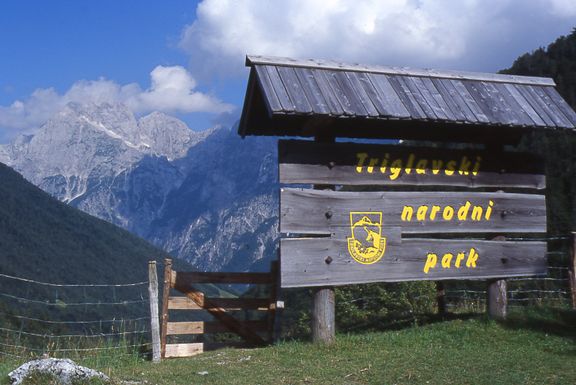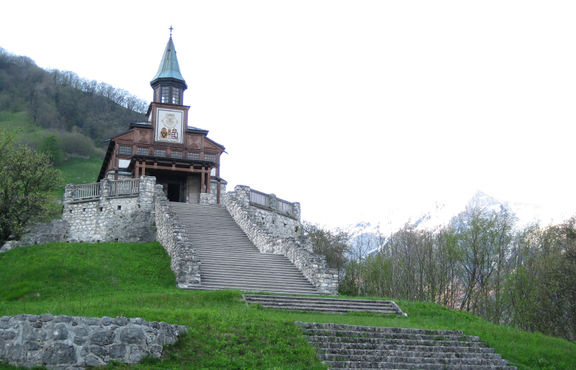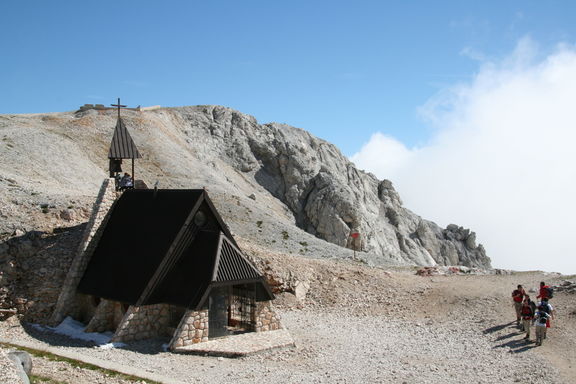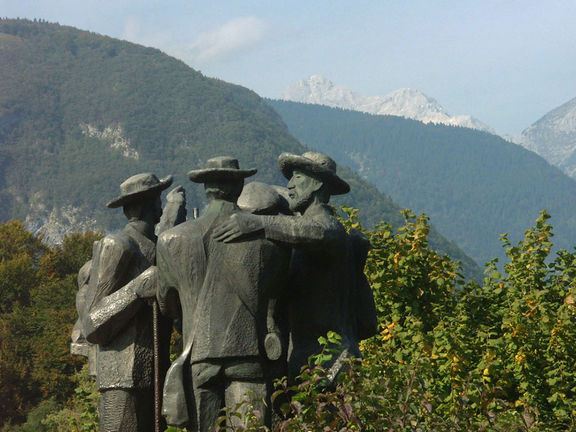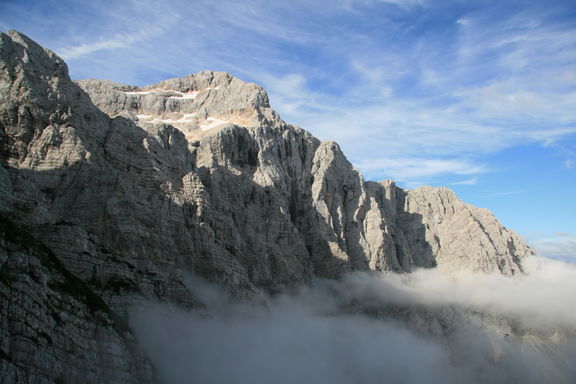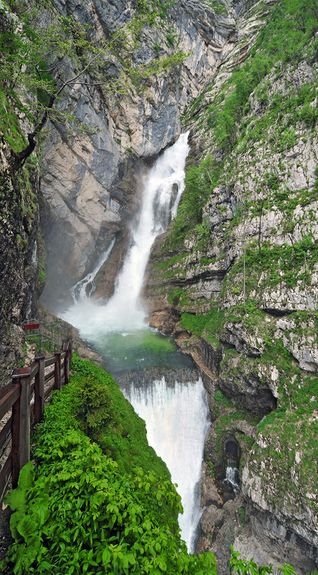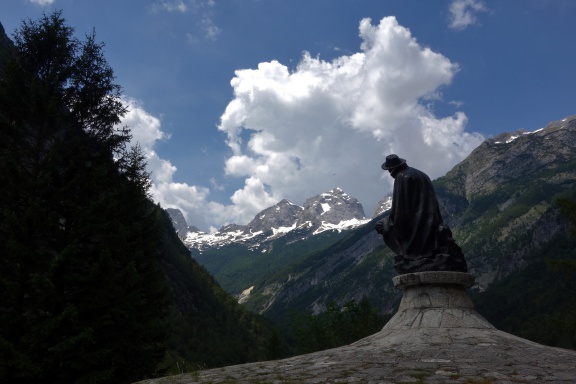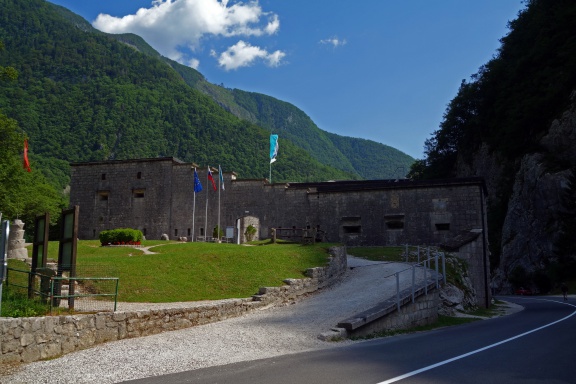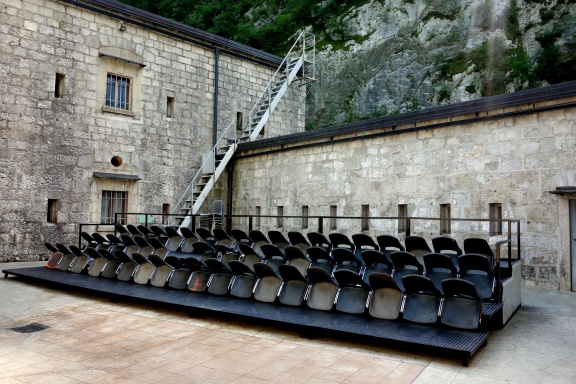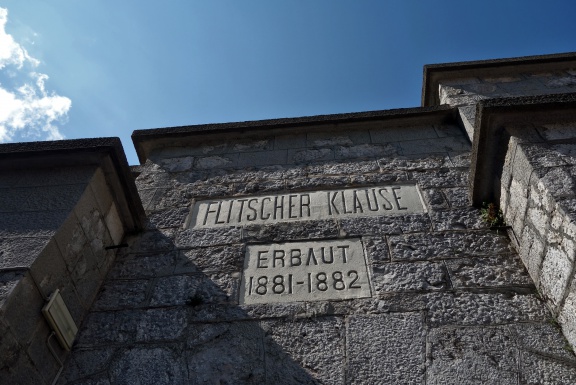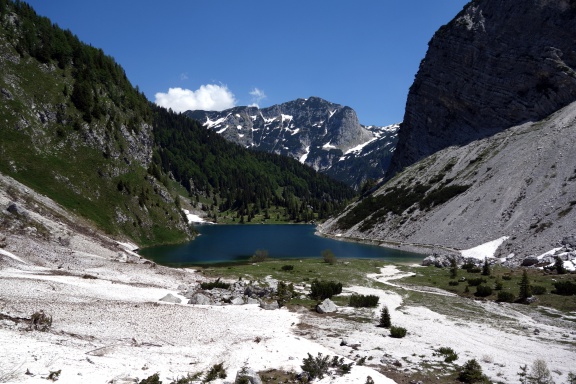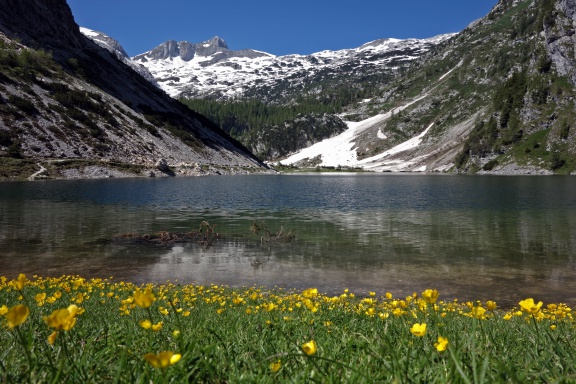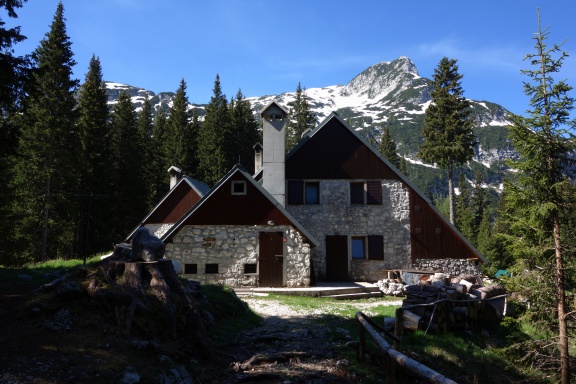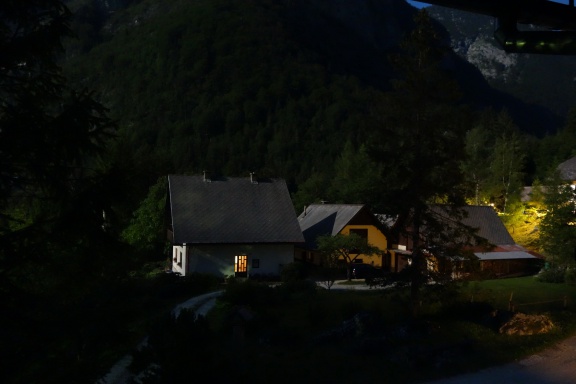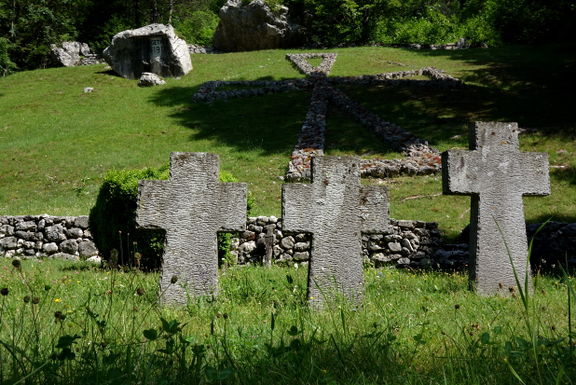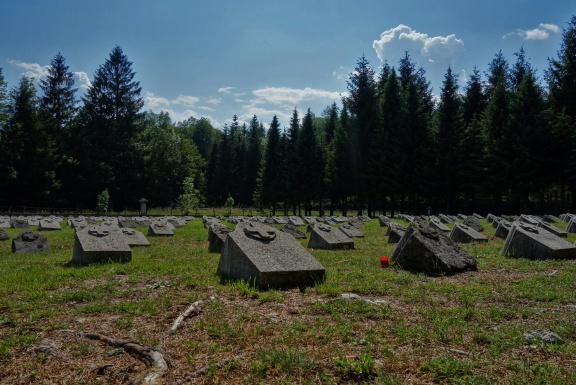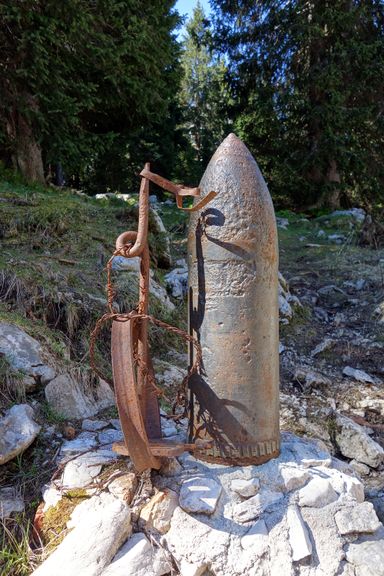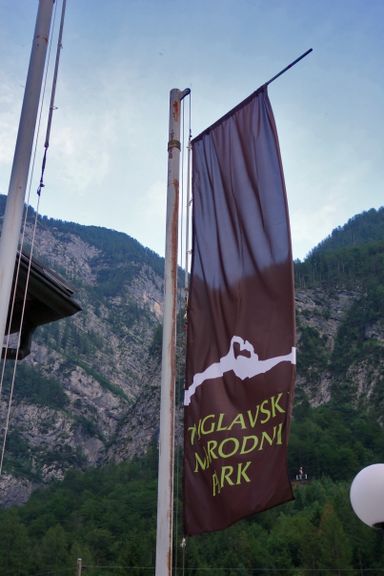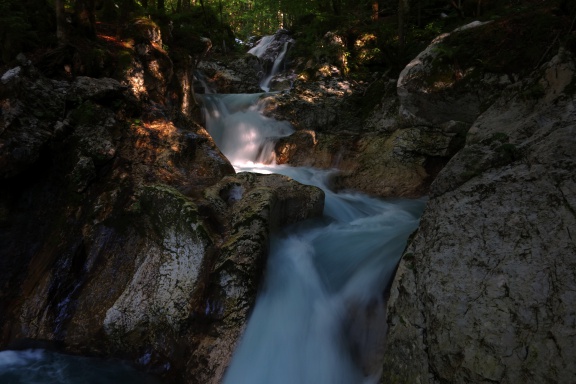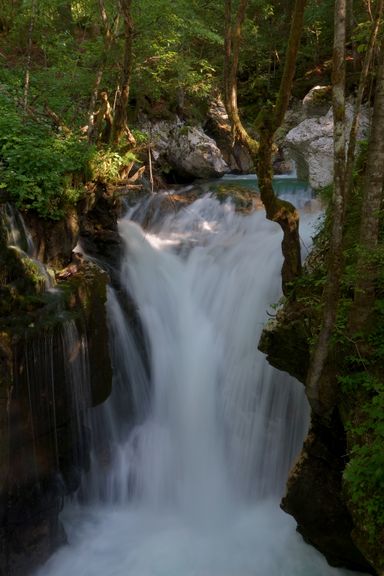Difference between revisions of "Triglav National Park"
(Popravila infobox) |
(mwtool_article) |
||
| (13 intermediate revisions by 6 users not shown) | |||
| Line 12: | Line 12: | ||
| fax = 386 (0) 4 578 0201 | | fax = 386 (0) 4 578 0201 | ||
| email = triglavski-narodni-park@tnp.gov.si | | email = triglavski-narodni-park@tnp.gov.si | ||
| − | | website = | + | | website = https://www.tnp.si/sl/spoznajte/ |
| managed by = Triglav National Park Public Institute | | managed by = Triglav National Park Public Institute | ||
| opening hours = 8am-4pm Mon-Fri | | opening hours = 8am-4pm Mon-Fri | ||
| contacts = {{Contact | | contacts = {{Contact | ||
| − | | name | + | |name = Bogomil Breznik |
| − | |role | + | |role = Acting Director |
| − | |telephone = | + | |telephone = |
| − | |email = | + | |email = |
| + | }} | ||
| + | |accounts= | ||
| + | https://www.facebook.com/triglav.national.park.official/ | ||
| + | https://www.instagram.com/triglav.national.park/ | ||
| + | https://www.youtube.com/channel/UC8hWSbpW2GwBE5lM-vZ-DJg | ||
}} | }} | ||
{{Teaser| | {{Teaser| | ||
| − | {{Image|Triglav National Park 2014 Julius Kugy.jpg}} | + | {{wide Image|Triglav National Park 2014 Julius Kugy.jpg}} |
| − | [[Triglav National Park]] (TNP) is Slovenia's only national park. | + | Named after Mount Triglav, [[Triglav National Park]] (TNP) is Slovenia's only national park. Mount Triglav, the highest mountain in the heart of the park and also the highest summit in Slovenia (2864 metres), is also a national symbol which can be found in Slovenia's coat of arms and on its flag. Triglav National Park is managed by the [[Triglav National Park Public Institute]], based in Bled, which operates under the [[Ministry of the Environment and Spatial Planning]]. |
| − | Triglav National Park extends along the Italian border and | + | Triglav National Park extends along the Italian border and near to the Austrian border in the northwest of Slovenia, that is, in the southeastern section of the Alps. The park's territory is nearly identical with that occupied by the Eastern Julian Alps. The park covers 83,807 ha, or 4% of the territory of Slovenia. It is relished for its pristine nature with beautiful trekking paths into the high mountains, glacier lakes, cosy lodges and shelters and a lot of historic ethnographical and natural monuments. TNP was among the earliest European parks; the first protection by law dates back to [[established::1924]] when the Alpine Conservation Park was founded, but the first serious idea for protection came from seismologist and natural scientist [[Albin Belar]] already in 1908. |
}} | }} | ||
| − | |||
| − | |||
| − | |||
== Protecting and conserving the TNP's ecosystem == | == Protecting and conserving the TNP's ecosystem == | ||
| − | The principal task of the Triglav National Park Public Institute is the protection and conservation of the pristine nature of the park, but | + | The principal task of the Triglav National Park Public Institute is the protection and conservation of the pristine nature of the park, but the institute also carries out specialist and research tasks. |
| − | TNP has a very diverse ecosystem from the lowest point of Tolminka River 180 metres above sea level with narrow gorges to hills with vast forests and meadows to high mountain rocky landscape with rare protected plants and | + | TNP has a very diverse ecosystem from the lowest point of Tolminka River 180 metres above sea level with its narrow gorges to hills with vast forests and meadows to high mountain rocky landscape with rare protected plants and wildlife. Since 2003, the Alps and TNP have been protected by UNESCO as a biosphere reserve as part of the Sevilla strategy. |
== Rich autochthonous cultural heritage== | == Rich autochthonous cultural heritage== | ||
| − | Triglav National Park Public Institute is also responsible for preserving the autochthonous cultural heritage as | + | Triglav National Park Public Institute is also responsible for preserving the autochthonous cultural heritage as a basis for sustainable development. |
| − | The cultural heritage of the park is very diverse and picturesque | + | The cultural heritage of the park is very diverse and picturesque because the park lies at the meeting point of various climates as well as various cultures, each of which has left a mark on the cultural heritage of the area. The Alpine cultural heritage connects Slovenians with the family of Alpine nations (France, Switzerland, Monaco, Italy, Liechtenstein, Austria, Germany and Slovenia). In the past, 4 major economic branches prevailed in the region: iron foundries, charcoal-burning, forestry and Alpine dairy-farming. These economies also shaped the customs of the people living there. Today, agriculture with its pastoral economy, crafts (wood and wool products) and tourism are the major economic activities in the park, with some 2,400 inhabitants (2014) and nearly 2 million visitors per year (2015). |
The [[Register of Slovene cultural heritage - rkd.situla.org|register of immovable cultural heritage]] with the [[Ministry of Culture]] contains 300 units within the area of the Triglav National Park; secular architectural heritage prevails, followed by memorial heritage, settlement heritage, religious architectural heritage and archaeological heritage. | The [[Register of Slovene cultural heritage - rkd.situla.org|register of immovable cultural heritage]] with the [[Ministry of Culture]] contains 300 units within the area of the Triglav National Park; secular architectural heritage prevails, followed by memorial heritage, settlement heritage, religious architectural heritage and archaeological heritage. | ||
| Line 48: | Line 50: | ||
A number of museums are located within the borders of the Triglav National Park, including the [[Slovenian Alpine Museum]] in Mojstrana, [[Upper Sava Valley Museum, Jesenice]], the [[Kobarid Museum]], [[Oplen House]], the [[Museum of Alpine Dairy Farming, Stara Fužina]] and the [[Tolmin Museum]]. | A number of museums are located within the borders of the Triglav National Park, including the [[Slovenian Alpine Museum]] in Mojstrana, [[Upper Sava Valley Museum, Jesenice]], the [[Kobarid Museum]], [[Oplen House]], the [[Museum of Alpine Dairy Farming, Stara Fužina]] and the [[Tolmin Museum]]. | ||
| − | The park authority directly manages the following museum institutions [[Pocar Homestead, Mojstrana]], [[Trenta Lodge TNP Information Centre and Museum]] and [[Triglavska Roža Information Centre]]. The latter is also the administrative centre of the Triglav National Park. A new information centre | + | {{wide Image|Slovenian Alpine Museum - the entrance - Photo Miro Erzen.JPG}} |
| + | |||
| + | The park authority directly manages the following museum institutions [[Pocar Homestead, Mojstrana]], [[Trenta Lodge TNP Information Centre and Museum]] and [[Triglavska Roža Information Centre]]. The latter is also the administrative centre of the Triglav National Park. A new information centre, co-funded by the EU Interreg programme, recently opened in Stara Fužina near Bohinj Lake. It also runs the [[Trenta Lodge TNP Information Centre and Museum]]. | ||
== International collaboration == | == International collaboration == | ||
| − | TNP is a member of | + | TNP is a member of ALPARC, the international Alpine Network of Protected Areas. Within the European Union funding mechanisms (mostly Interreg programmes), TNP has been active in various regional projects such as Palpis (Cross-border cooperation and cross-border management plans for conservation important areas in the southern Julian Alps with the Italian National Park Prealpi Giuliae; 2000–2006), the Info centre of TNP at Bled (with National Park Hohe Tauern; 2005–2006), Alpencom (ALP ENvironmental COMmunication, with the French Les Ecrins as lead partner; 2005–2008), etc. |
== See also == | == See also == | ||
| Line 59: | Line 63: | ||
* [[Slovenian Alpine Museum]] | * [[Slovenian Alpine Museum]] | ||
* [[Museum of Alpine Dairy Farming, Stara Fužina]] | * [[Museum of Alpine Dairy Farming, Stara Fužina]] | ||
| + | * [[:Category:Natural heritage|The overlaps of natural and cultural heritage]] | ||
== External links == | == External links == | ||
| − | * [http://www.tnp.si/national_park/ Triglav National Park official website] (in | + | * [http://www.tnp.si/national_park/ Triglav National Park official website] (in Slovene, English and German) |
| − | * [http://www.tnp.si/experience/C205/ Information Centre TNP Bled] (in | + | * [http://www.tnp.si/experience/C205/ Information Centre TNP Bled] (in Slovene, English and German) |
* [http://en.wikipedia.org/wiki/Triglav_National_Park Triglav National Park on Wikipedia] | * [http://en.wikipedia.org/wiki/Triglav_National_Park Triglav National Park on Wikipedia] | ||
* [http://en.wikipedia.org/wiki/Triglav Triglav on Wikipedia] | * [http://en.wikipedia.org/wiki/Triglav Triglav on Wikipedia] | ||
* [http://www.burger.si/TriglavNationalPark/TriglavskiNarodniParkENG.htm Panoramas of Triglav National Park] on [[Virtual Guide to Slovene Museums and Galleries]] | * [http://www.burger.si/TriglavNationalPark/TriglavskiNarodniParkENG.htm Panoramas of Triglav National Park] on [[Virtual Guide to Slovene Museums and Galleries]] | ||
| + | |||
===International projects=== | ===International projects=== | ||
| − | * [http://www.palpis.org/ | + | * [http://www.palpis.org/ Palpis (Cross-border cooperation and cross-border management plans for conservation important areas in the southern Julian Alps)] (in Slovene and Italian) |
| − | * [http://www.tnp.si/get_to_know/projects/283 | + | * [http://www.tnp.si/get_to_know/projects/283 Alpencom (ALP ENvironmental COMmunication)] |
| − | * [http://www.tnp.si/get_to_know/projects/282 | + | * [http://www.tnp.si/get_to_know/projects/282 ERA – Eko region Alpe Adria] |
| − | * [http://www.avis-gis.info/ | + | * [http://www.avis-gis.info/ AV.IS (Alps Visitors – InfoSystem – Natural Hazards)] (in Slovene, English and German) |
{{Gallery}} | {{Gallery}} | ||
| Line 76: | Line 82: | ||
[[Category:Monuments and sites]] | [[Category:Monuments and sites]] | ||
[[Category:Support services]] | [[Category:Support services]] | ||
| − | [[Category: | + | [[Category:UNESCO World Heritage Sites in Slovenia]] |
| − | [[Category: | + | [[Category:Updated 2020]] |
| + | [[Category:Natural heritage]] | ||
| + | [[Category:Funding,_professional_and_support_services]] | ||
Latest revision as of 03:37, 19 February 2021
Protecting and conserving the TNP's ecosystem
The principal task of the Triglav National Park Public Institute is the protection and conservation of the pristine nature of the park, but the institute also carries out specialist and research tasks.
TNP has a very diverse ecosystem from the lowest point of Tolminka River 180 metres above sea level with its narrow gorges to hills with vast forests and meadows to high mountain rocky landscape with rare protected plants and wildlife. Since 2003, the Alps and TNP have been protected by UNESCO as a biosphere reserve as part of the Sevilla strategy.
Rich autochthonous cultural heritage
Triglav National Park Public Institute is also responsible for preserving the autochthonous cultural heritage as a basis for sustainable development.
The cultural heritage of the park is very diverse and picturesque because the park lies at the meeting point of various climates as well as various cultures, each of which has left a mark on the cultural heritage of the area. The Alpine cultural heritage connects Slovenians with the family of Alpine nations (France, Switzerland, Monaco, Italy, Liechtenstein, Austria, Germany and Slovenia). In the past, 4 major economic branches prevailed in the region: iron foundries, charcoal-burning, forestry and Alpine dairy-farming. These economies also shaped the customs of the people living there. Today, agriculture with its pastoral economy, crafts (wood and wool products) and tourism are the major economic activities in the park, with some 2,400 inhabitants (2014) and nearly 2 million visitors per year (2015).
The register of immovable cultural heritage with the Ministry of Culture contains 300 units within the area of the Triglav National Park; secular architectural heritage prevails, followed by memorial heritage, settlement heritage, religious architectural heritage and archaeological heritage.
Museums in TNP
A number of museums are located within the borders of the Triglav National Park, including the Slovenian Alpine Museum in Mojstrana, Upper Sava Valley Museum, Jesenice, the Kobarid Museum, Oplen House, the Museum of Alpine Dairy Farming, Stara Fužina and the Tolmin Museum.
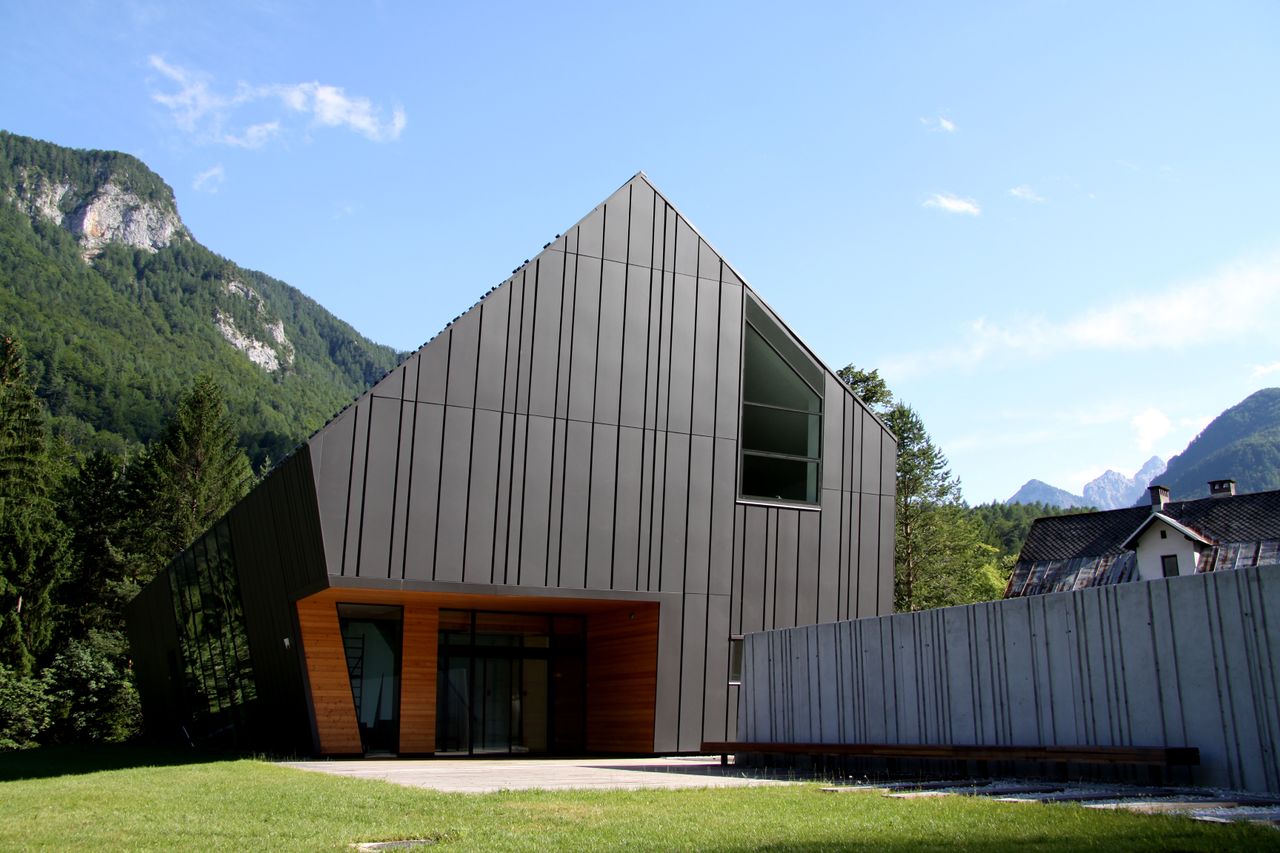
The park authority directly manages the following museum institutions Pocar Homestead, Mojstrana, Trenta Lodge TNP Information Centre and Museum and Triglavska Roža Information Centre. The latter is also the administrative centre of the Triglav National Park. A new information centre, co-funded by the EU Interreg programme, recently opened in Stara Fužina near Bohinj Lake. It also runs the Trenta Lodge TNP Information Centre and Museum.
International collaboration
TNP is a member of ALPARC, the international Alpine Network of Protected Areas. Within the European Union funding mechanisms (mostly Interreg programmes), TNP has been active in various regional projects such as Palpis (Cross-border cooperation and cross-border management plans for conservation important areas in the southern Julian Alps with the Italian National Park Prealpi Giuliae; 2000–2006), the Info centre of TNP at Bled (with National Park Hohe Tauern; 2005–2006), Alpencom (ALP ENvironmental COMmunication, with the French Les Ecrins as lead partner; 2005–2008), etc.
See also
- Pocar Homestead, Mojstrana
- Trenta Lodge TNP Information Centre and Museum
- Triglavska Roža Information Centre
- Slovenian Alpine Museum
- Museum of Alpine Dairy Farming, Stara Fužina
- The overlaps of natural and cultural heritage
External links
- Triglav National Park official website (in Slovene, English and German)
- Information Centre TNP Bled (in Slovene, English and German)
- Triglav National Park on Wikipedia
- Triglav on Wikipedia
- Panoramas of Triglav National Park on Virtual Guide to Slovene Museums and Galleries
International projects
- Palpis (Cross-border cooperation and cross-border management plans for conservation important areas in the southern Julian Alps) (in Slovene and Italian)
- Alpencom (ALP ENvironmental COMmunication)
- ERA – Eko region Alpe Adria
- AV.IS (Alps Visitors – InfoSystem – Natural Hazards) (in Slovene, English and German)



